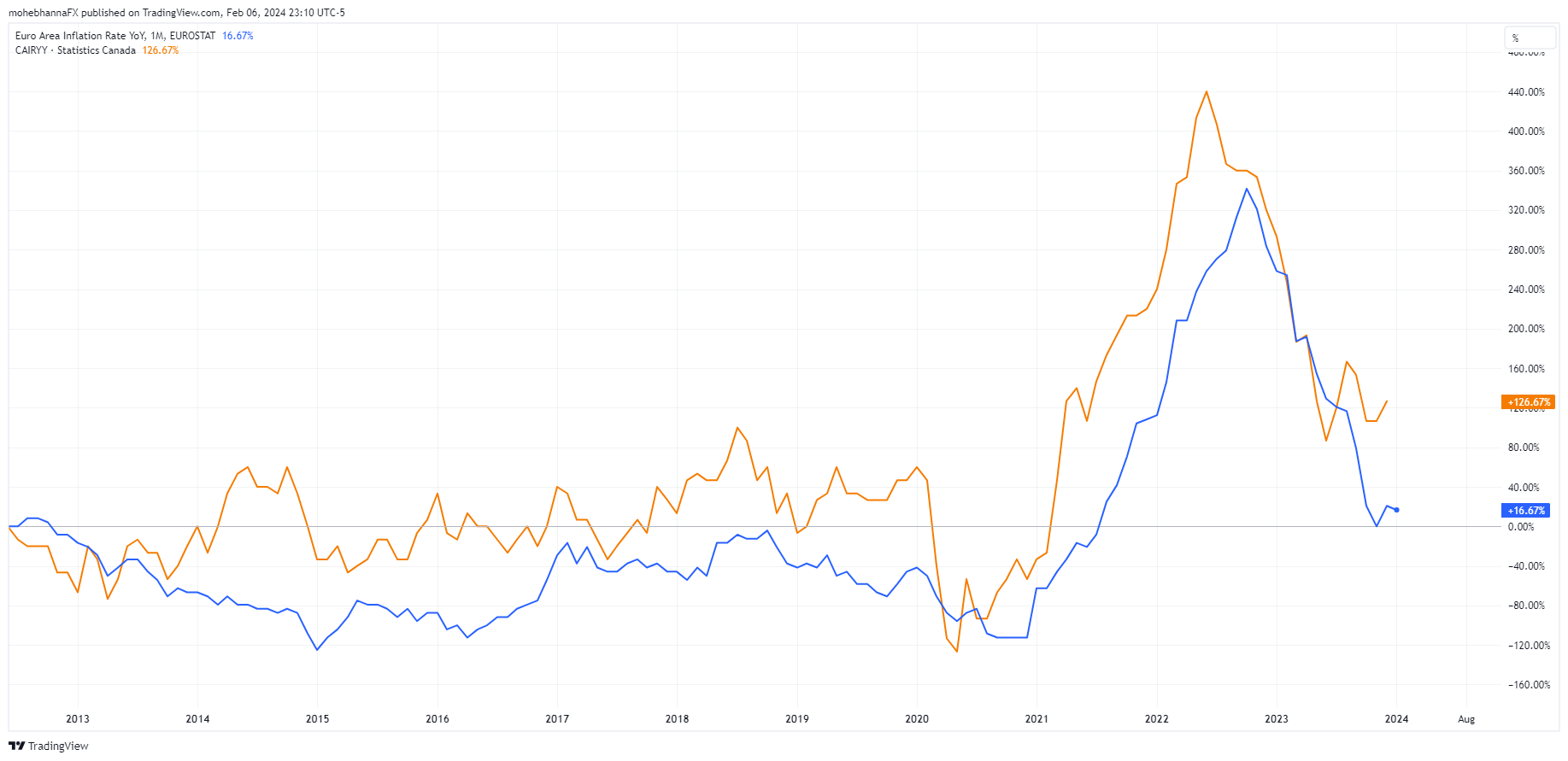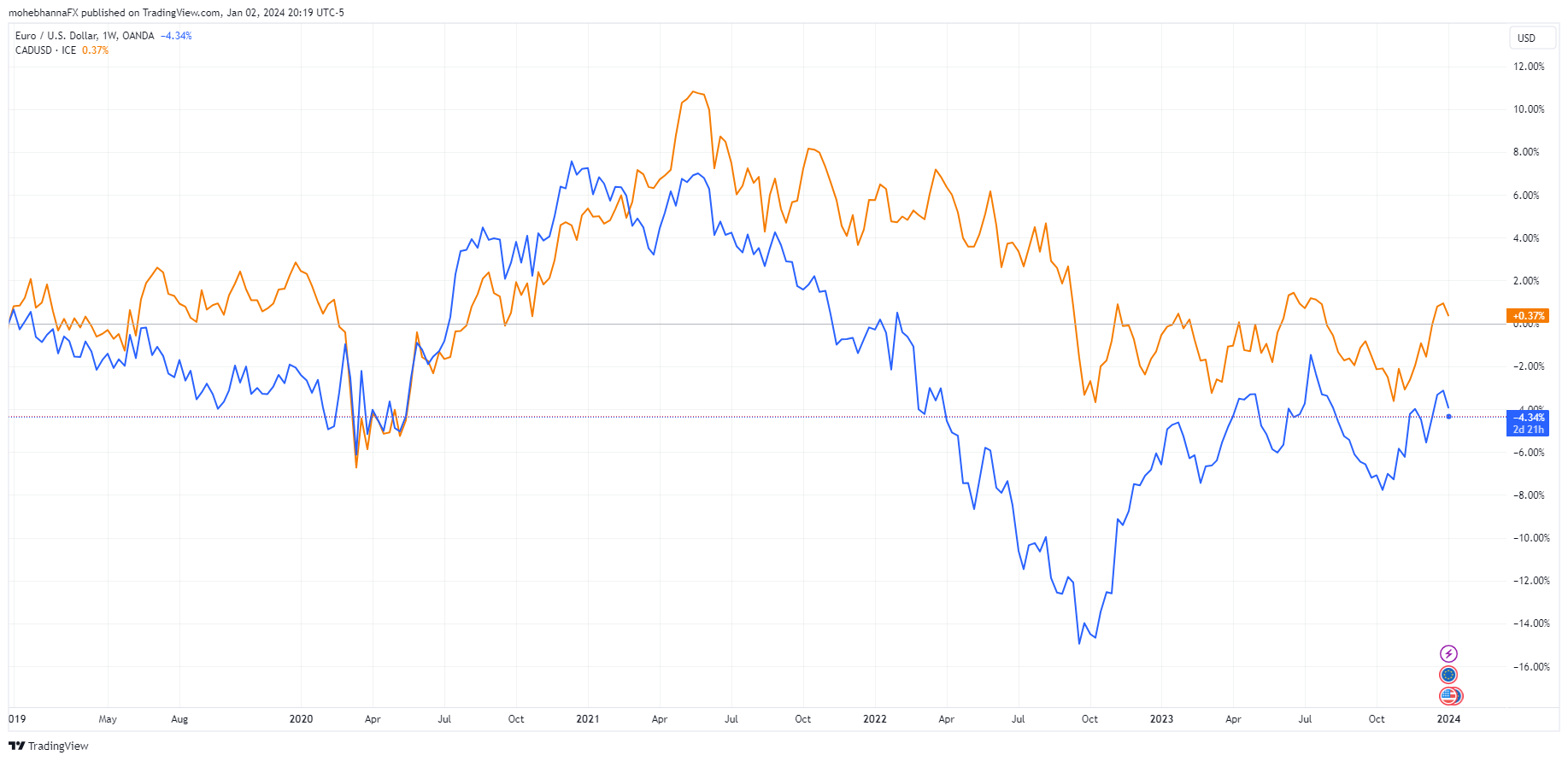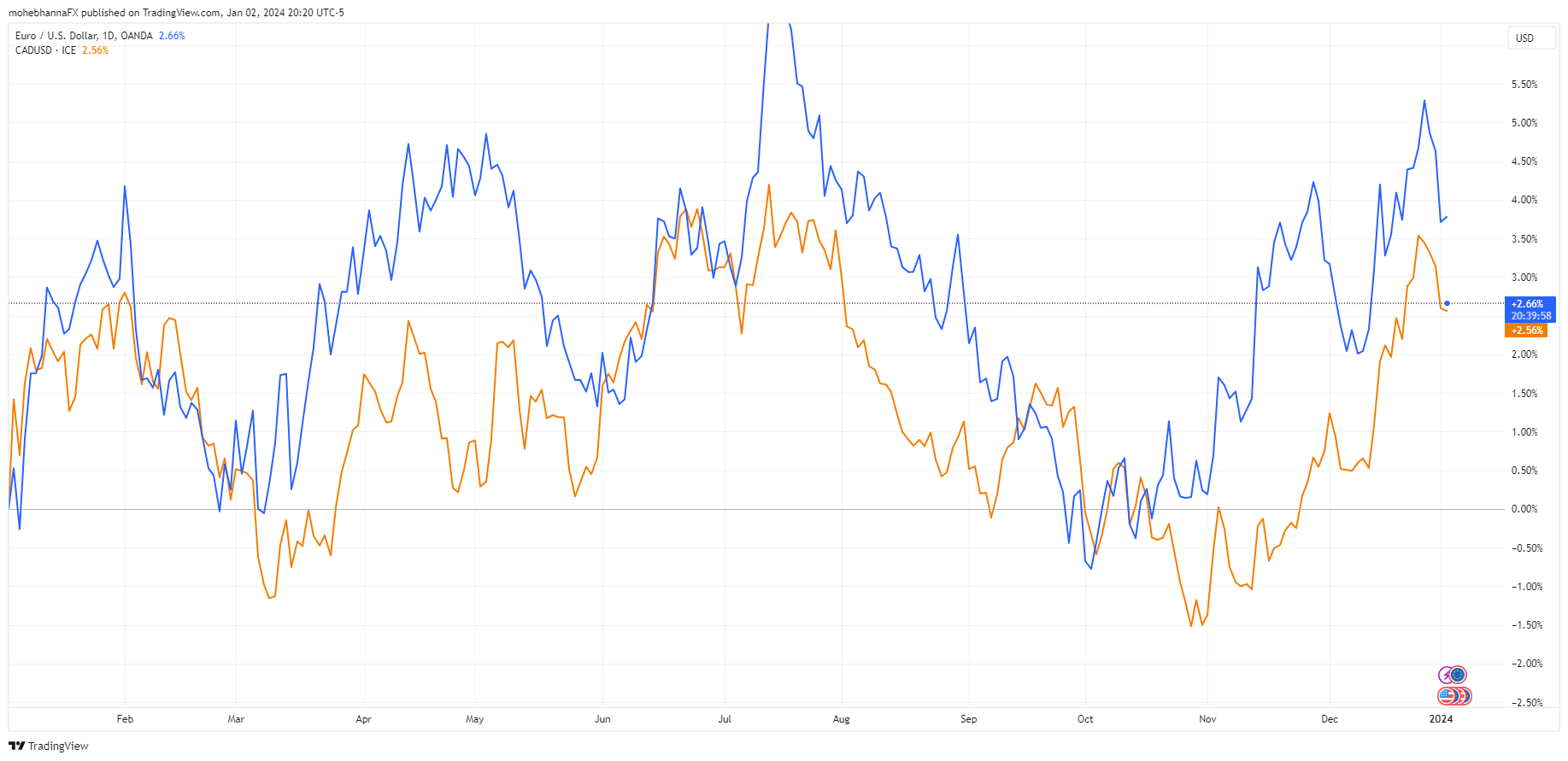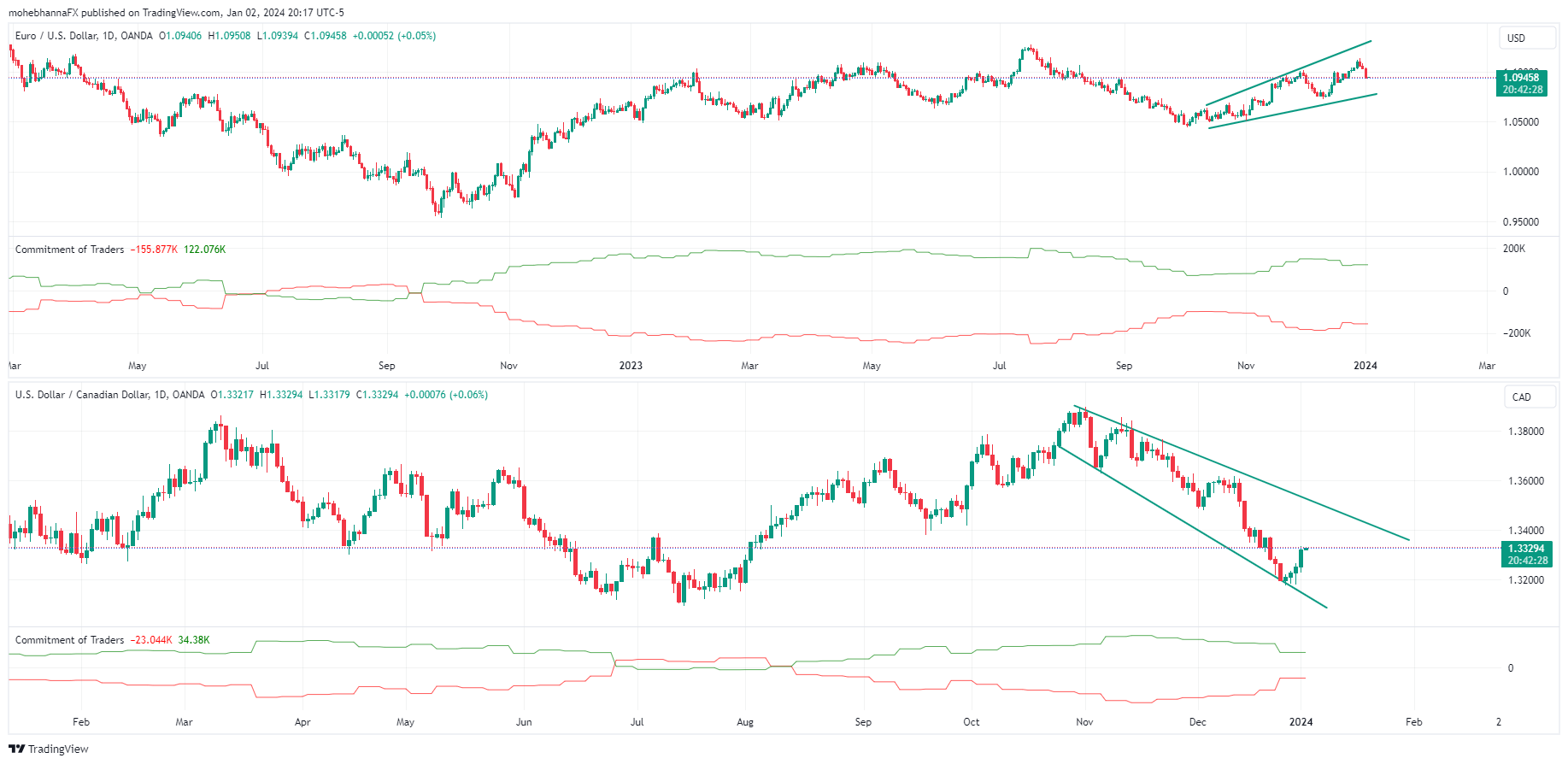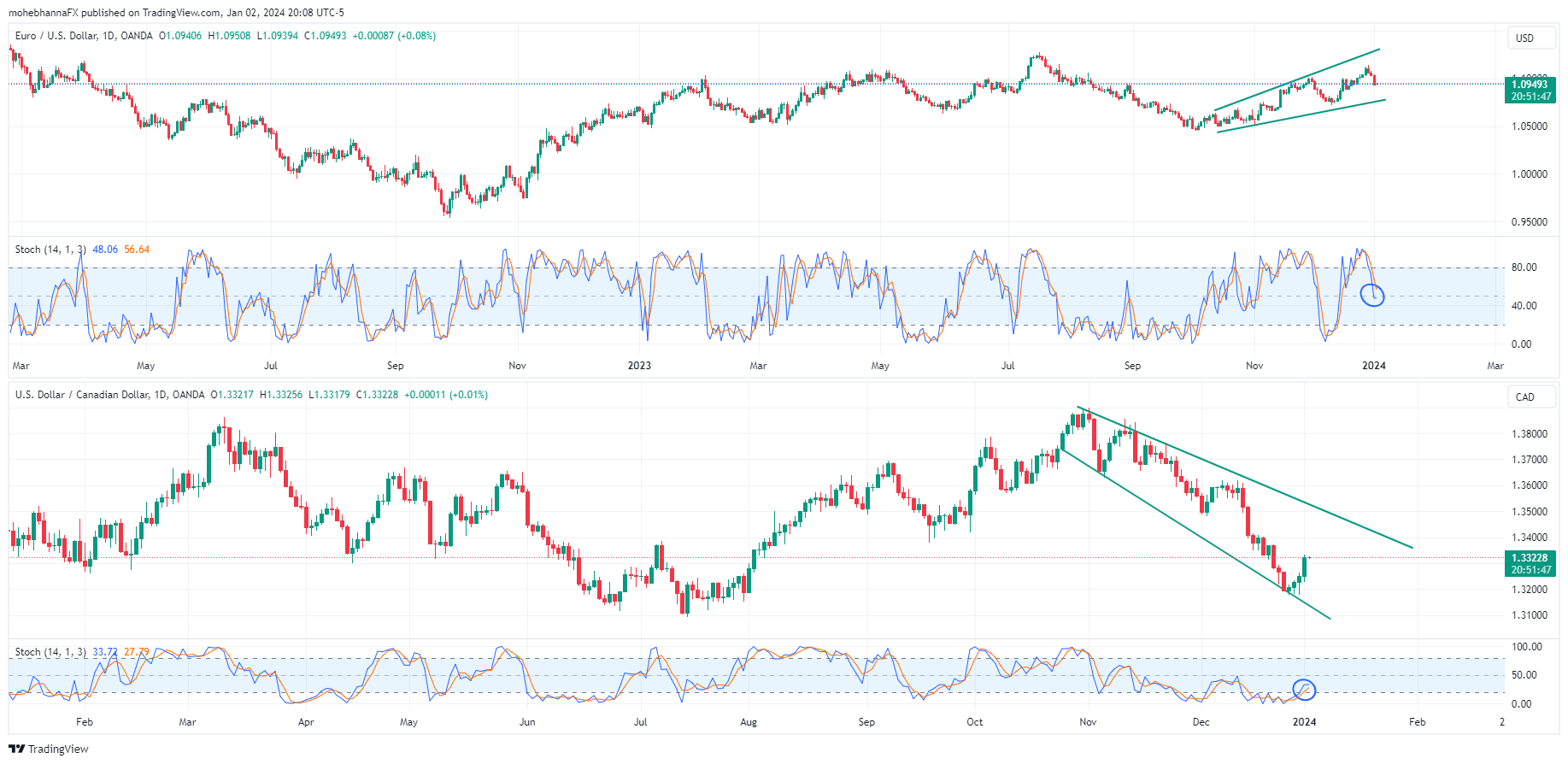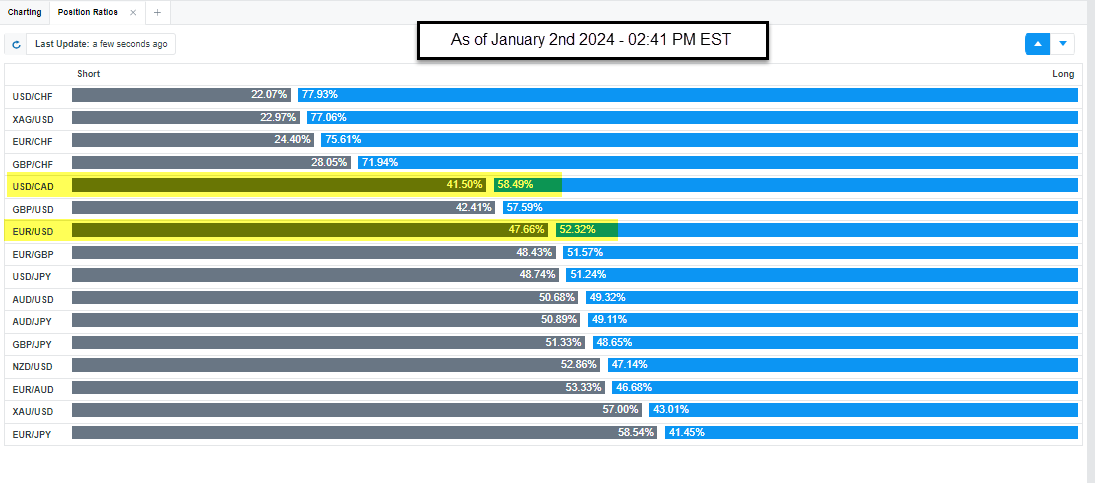Introduction
The forex market has a wide variety of currency pairs that are available for trading which makes it challenging to select which currency pair to trade. In some cases, traders may choose specific pairs for many reasons including but not limited to their trading style, risk tolerance, liquidity, or a specific trading strategy.
Traders can opt in to trade the 'majors', which include the U.S. dollar, such as EUR/USD and USD/JPY, or the 'minors' which include currency crosses such as EUR/JPY and EUR/CAD. Traders also have the option to trade 'exotics' such as USD/TRY and EUR/SEK.
In this article, we will focus on FX crosses and some of the tools that traders may consider looking at or incorporating into their existing arsenal of trading tools while trading cross pairs. The idea with cross pairs is that the US dollar is partially out of the equation.
When trading cross pairs, a trader has two main points to consider and analyze. The first is estimating how much each currency will move against the US dollar independently, and the second is estimating how much the two currencies will move against each other due to the economic relationship between the two economies behind the cross pair.
For example, EUR/CAD is a cross-currency pair affected by how much the Euro moves against the US Dollar, how much the CAD moves against the US Dollar, and how much EUR and CAD will move against each other independent of the US Dollar due to the direct economic relationship just between the EU and Canada.
1 – How to understand the current fundamentals of each unique currency against the U.S. dollar
The U.S. dollar is the world’s reserve currency, and any change in USD affects the exchange rate for different FX pairs.
Therefore, the first step should be to understand the fundamentals of each currency against the U.S. dollar, with the aim of identifying the overall trend for both currencies and determining if the currency in question may be leading or lagging versus the greenback.
This can include, but is not limited to, key fundamental indicators such as interest rates, the consumer price index, job numbers, and GDP, which can help highlight any discrepancy or arbitrage opportunity within the data that may help with decision-making.
In our example here, we will review Inflation data by comparing both currencies.
The latest CPI report from the EU shows inflation continues to decline, reaching 2.4%, close to the European Central Bank's (ECB) target of 2%. The current CPI may suggest that the ECB can hold interest rates at their current level, but it also doesn't warrant any rate cuts. On the other hand, in Canada, it's a slightly different story; although the inflation rate is in decline, it is declining at a slower pace than in the EU. The inflation rate currently stands at 3.1%, down from its high of 8.0% seen in June 2022.
In theory, a currency with higher inflation means higher interest rates and, therefore, higher exchange rates against other currencies with lower interest rates.
2 – Using Relative Strength
The Relative Strength is a technical tool that can offer traders a performance comparison between instruments over a specified period, regardless of bullish or bearish direction. In other words, both currencies could be moving in the same direction, but we are looking for which one is stronger or weaker when compared to the other.
It is worth noting that the "Relative Strength" is different from the "Relative Strength Index" known as RSI, each indicator serves a different purpose and both are available on TradingView.
On the above chart, we have EUR/USD with an overlay of USD/CAD (flipped to CAD/USD for easier comparison) using both a long and short timeframe. We can see that CAD is outperforming on the monthly time frame over a period of 5 years and that the spread between the two instruments may have more room to widen.
As for the shorter time frame, we used the daily chart for the period of 1 year which also suggested that both instruments are currently converging which may improve the odds of widening.
To explain this further, we need to remember basic correlations.
Both pairs, EUR/USD and USD/CAD, have a correlation, especially when the USD is the driver for changes in exchange rate pricing. The degree of correlation between any two currencies does change over time, thus creating opportunities for traders on both sides of the market. Traders also look for discrepancies in the degree of correlation between FX pairs to find arbitrage opportunities.
3 – Using multi-chart analysis across three currency pairs
When applying technical analysis, traders need to consider keeping a balance between doing enough analysis and not overdoing it.
However, when it comes to trading forex cross pairs, it can prove useful for traders to review and apply technical analysis to three instruments simultaneously.
For example, if we are trading EUR/CAD, we can consider analyzing EUR/USD, USD/CAD and EUR/CAD charts in the same order.
Analyzing and comparing patterns and technical indicators behavior on EUR/USD to USD/CAD charts may offer an expectation of which pair may move first, which pair has the potential for a larger move, and whether the U.S. dollar is moving in the same or an opposite direction against both currencies (EUR and CAD).
The chart below is just a brief example; we will only continue to cover one indicator to explain a point.
We can see both forex pairs trending in the opposite direction; however, since USD is the quoted currency on EUR/USD and the base currency on USD/CAD, they are considered trading in the same direction.
By comparing the %K line position between EUR/USD and USD/CAD, we can see that CAD may have more potential to move when compared to EUR, and it is not just the oscillator scale; the distance for price to reach the trendline within the broadening formation is wider for CAD than it is for EUR, thus potentially allowing for a larger move if compared to EUR.
Finally, the EUR/CAD chart itself can offer traders additional clues to their previous analysis as well as help with risk management by attempting to find an appropriate entry price that may help minimize losses and maximize potential gains.
4 – Comparing Sentiment Indicators
Sentiment indicators can be a major component in any trading strategy, and comparing sentiment data between the two currencies may also help identify which has the scope for a larger move or highlight trading opportunities in general.
We will use the same chart again, but this time we will have a Commitment of Traders (COT) indicator applied to it. By comparing the large speculator’s position levels for EUR against those of CAD, we can see that CAD position levels are following the trending price more closely than when compared to EUR.
In this example, stronger positive sentiment suggests potential strength for CAD exchange rate against EUR.
Another sentiment tool is OANDA’s position ratio.
The image below reflects the total percentages split in long and short positions across OANDA's client base, and by comparing EUR/USD to USD/CAD, the percentage for USD longs on EUR/USD (otherwise short positions on EUR/USD) is 47.66%, while against CAD, the longs were 58.49%.
This shows CAD strength against EUR in a different way, although the longs on USDCAD are higher than for the USD against the EUR.
That said, some consider a retail trader’s position ratio can be considered a ‘contrarian indicator’ by some traders.
Conclusion
When trading any Forex cross-pairs, it may help to look at indicators from a different perspective. In today’s fast markets, traders should consider utilizing, testing, and optimizing different indicators depending on their strategies. The above points are just examples and by far don’t cover everything; however, they shed some light on what we may consider and how to view our indicators differently.
Disclaimer
This article is for general information purposes only, not to be considered a recommendation or financial advice. Past performance is not indicative of future results.
It is not investment advice or a solution to buy or sell instruments. Opinions are the authors; not necessarily that of OANDA Corporation or any of its affiliates, subsidiaries, officers or directors. Leveraged trading in foreign currency contracts or other off-exchange products on margin carries a high level of risk and is not suitable for everyone. We advise you to carefully consider whether trading is appropriate for you in light of your personal circumstances. You may lose more than you invest. We recommend that you seek independent financial advice and ensure you fully understand the risks involved before trading. Trading through an online platform carries additional risks. Losses can exceed deposits.


